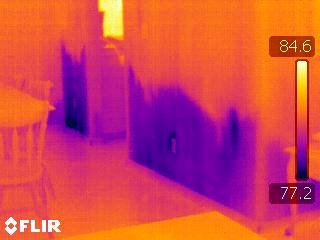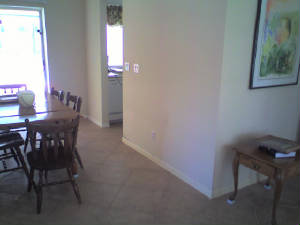|
Mold Inspections on Marco Island Marco Island consumers should understand that our mold assessment (inspection) reports meet and
exceed the requirements of Florida Mold Statutes. Many inspector reports don’t. Mold Inspection Reports
should identify the source of the mold problem, the location and extent of mold problem and include recommendations for the
mold cleanup (protocols). Mold inspection reports should be required to include “post remediation requirements”
(clearance/what needs to be done to prove mold cleanup was successful).
Please contact our office to schedule:
Radon Tests / Mold Assessments (inspections) & Sampling
Formaldehyde & VOC Tests / Allergen Screening
Radon & Mold Professionals Toll free: (800) 881-3837
188 1st Street, Bonita springs, FL 34134 .... (239) 498-4619
188 1st Street, Bonita Springs, FL 34134 .... (239) 948-9717
radonandmoldprofessionals@gmail.com or
radonandmoldprofessionals@comcast.net
Easy to understand as well as detailed mold assessment (inspection)
report provides the remediation company the information needed to give the Marco island client a proposal for
cleanup.
| Infrared image showns moisture on drywall |

|
| Moisture is always confirmed with moisture meter |
Infrared themal imaging cameras are used by all
Professional Marco Island Mold Assessors (inspectors). Large areas can be checked quickly and hard to access areas such as ceilings can easily be checked.
| digital photo of area in photo on the left |

|
| Mold need moisture to grow (food & water) |
Your Marco Island Mold Report should always include
digital photos of areas of concern to aid client in locating them after inspection.
Your Marco Island mold inspector (assessor) must be licensed as such
by the state of Florida. Professional mold inspectors will always use an infrared camera to scan large areas of your home
or office for possible moisture intrusion which can result in mold growth. Any suspect areas identified with an infrared camera
must also be checked with a moisture meter.
Mold Assessment Mold assessment
report is a document prepared by a Florida DBPR licensed mold assessor for
a client. The mold report describes any observations made, measurements
taken (samples), and locations and analytical results of samples
taken
by the assessor during a mold inspection. An assessment report can
be either
a stand‐alone document
or a part of a mold management plan or mold remediation protocol or mold
remediation recommendations prepared by the mold assessor.
Air Sampling only: “Mold Air Sampling only” is often used
to help determine the extent of a mold problem and/or to help "clear" a Marco Island mold remediation project. Air sampling protocols (minimum)recommend
an air sample be collected by the main return area of each HVAC system. If home is a 2 story structure,
an air sample is recommended on each floor. · An outdoor
sample (baseline sample) is also required. · Minimum air
sampling (mold testing) is one sample outdoors and one sample indoors. · For
insurance claims a surface sample of any visible mold is generally required (tape lift or swab). Mold
Assessment (Inspection / Air Samples/ Recommendations): We use Infrared cameras, moisture meters, etc. We provide source identification,
documentation of extent and amplification of mold, photo documentation with recommendations for corrections
based on national guides such as S500 & S520 for the accessible indoor living space. (Assessment = visual inspection
& air sampling for accessible indoor space) What You Need to Know About a Marco Island Mold Assessment The purpose of a visual assessment for mold is to identify and document
the following criteria: 1)
the location(s) of interior substrates and/or contents displaying visible mold growth; 2) conditions actively conducive to mold growth
(i.e. wet building materials, high humidity, HVAC problems, etc.); 3) conditions previously conducive to mold growth (i.e. water
damaged materials that are currently dry);
4) the potential source(s) of moisture that are deemed responsible for creating the identified
problem(s); and 5)
determine the indoor air quality as it specifically relates to aerosolized mold spore concentrations (i.e. consistency with
normal fungal ecology). Air sampling only for mold (which is commonly performed with a “home inspection”)
should not be relied upon as a conclusive determination about a given property’s mold condition. Air sample analysis
is useful and valuable information however it does have significant limitations. For instance, air sampling data will not
identify the “source” location(s) and all too often can show a non-elevated airborne condition (i.e. passing air
samples) even though a mold problem exists within the home. The above criteria are not typically included with a general “home
inspection” that is primarily designed to identify “functionality” issues (i.e. what works and what doesn’t
work) of a given home. All too often, we receive air sample reports showing elevated airborne concentrations yet the inspector
doesn’t identify the actual source of the problem and defers them to a remediator. Unfortunately with this scenario,
the remediation company doesn’t know the source either and there ends up being more questions than answers. Conversely,
we have seen countless passing air samples yet a mold problem is found after the fact. At the end of the day, do not rely on air samples only or
air samples performed with a “home inspection” to give you a conclusive perspective of the property’s mold
condition. If mold is a concern, have a mold assessment and not just air samples. It will save a lot of time and money to
do it right from the start.
Our Florida mold inspections are designed to provide a thorough
assessment of the home or business for the presence of mold, conditions conducive to mold growth and for determining
the indoor air quality. We accomplish this by providing a thorough visual inspection of the indoor environment and the
collection of air and or surface samples. Samples are collected following Indoor Environmental Standards Orginization
(IESO) protocols and shipped overnight to a third party, AIHA (American Industrial Hygiene Association) EMLAP (Environmental
Microbiology Laboratory Accreditation Program ) accredited laboratory for environmental microbiology analyses. Indoors mold can only grow if two conditions are present: first is
an organic food source and the second is sufficient moisture. Food sources for mold indoors are abundant.
They include building materials like drywall, pressboard materials, cabinetry and settled out airborne particulate like
dust. Because these food sources are inherent in most every building, controlling the food sources is not realsitic.
The other necessity for mold, sufficient moisture, is the controlable factor. The truth is, if you control moisture
indoors, you will never have a mold problem. Utilizing
infrared thermal imaging cameras on every inspection helps us identify areas that are wet and actively evaporating moisture.
A roof leak, for instance, that is impacting the living room ceiling may not be obvious to the naked eye, however when that
area is viewed with the infrared camera, the wet (cooler) area of the ceiling will show clear as day. In addition, we
also use an instrument called a protimeter. This device is placed directly on a given surface like a wall or the interior
of a sink base cabinet which then provides a readout of the relative moisture content of that material. For
instance an area of drywall under a window that is getting wet as a result of water migrating in through cracks in the
exterior stucco and or under the exterior window frame, will show a much higher moisture content than the the dry, or normal
moisture content, of the drywall to the left or right of the window.
| John prefers this camera for Mold Assessments |
|
|
| FLIR Infrared Thermal Imaging Camera |
| All of our Mold Assessors use Infrared Cameras |
|
|
| This "tool" is always confirmed with moisture meter |
| Infrared cameras allow us to scan large areas |
|
|
| Mold needs Moisture to Grow |
Another moisture source that negatively impacts many of the homes,
from a mold perspective in Florida, is the indoor humidity levels. This moisture source is less understood in respect
to its impact on the indoor environment. Too often as well, it is poorly understood the critical role the HVAC system
(Heating, Ventillation and Air Conditioning) has on the indoor relative humidity and indoor air quality as
a whole. When a properly maintained and operating residential A/C is running, it obviously is providing cooler air to
the indoor space. However, and far less understood is, it is also removing moisture from the air. Residential
HVAC design cools/heats the same indoor air over and over. For air conditioning, the HVAC system pulls the
air in the home into the system at the main return(s), cools it down and then supplies it back to all rooms
in the home designed to be under air. In the process of cooling the air down, it drops the air temperature to below
the dew point temperature. When this happens, water vapor in that air is condensed into liquid water.
Those white PVC pipes we often see sticking out of the exterior base of a home that are dripping water, that's the water
that was just in your home's air in the form of water vapor, commonly known as humidity. When the HVAC system is not
operating properly, oversized, turned off completely or has the thermostat set too high, it loses the ability to
remove that water vapor from the indoor air. As a result, indoor humidity levels increase. Generally speaking,
humidity levels consistently above 55% indoors provides sufficient moisture for many molds to grow. This fact leads
to the importance of the visual inspection part of our asseement. All too often, a home can look just fine as
you walk around, upon closer inspection however, humidity driven mold growth can be growing on numerous surfaces throughout.
Interior sides of closet doors, the undersides of shelving, cabinets, tables and chairs are typical locations. In this
all too common scenario, the mold is utilizing the available moisture in the air (elevated indoor relative humidity) and settled
out organic airborne particulate and/or organic building materials for food.
| Particle counters are also handy tools |
|
|
| Tracking down the source of mold is often difficult |
Particle Counters help your mold assessor by measuring the particles
(mold spores) in the air in a given location. In many cases, the closer to the source, the higher the count. Particle
counters are expensive but very useful tools for the professional mold inspector. Mold remediators often hire
us to check their air scrubbers for leaks; a leak allows mold spores to by pass the filters designed to remove air borne particles. The
goal during mold remediation is to remove mold spores from the air with air scubbers. This sometimes happens when a new
filter is not installed properly or is sized wrong.
As Board Certified Indoor Environmentalists (CIE) by the American Council for
Accredited Certification and having performed well over 8,000 mold inspections in Florida since 2002, our hands-on field experience
and technologically advanced tools, helps each of our clients receive a professional, comprehensive and well documented
assessment of mold and moisture inside their home or business. It is also critically important to realize that we, as
a company, do not provide any remedial services. Put simply, we don't fix anything. As a result, we do not have
any vested interest in the outcome of our assessment. No financial gain interests or concerns, no financial losses interest
or concerns. Our # 1 job when in your home or business is to document our findings and provide you a comprehensive
report.
Certified Indoor Environmentalists licensed as Mold
Assessors by the state of Florida are the first choice of professional home inspectors for their clients environmental
concerns such as mold. CIE's have to prove experience and pass one of the exams now adopted by Florida for a mold license.
Most mold assessors were "grandfathered" in the mold license and did not pass an ACAC exam. |
|